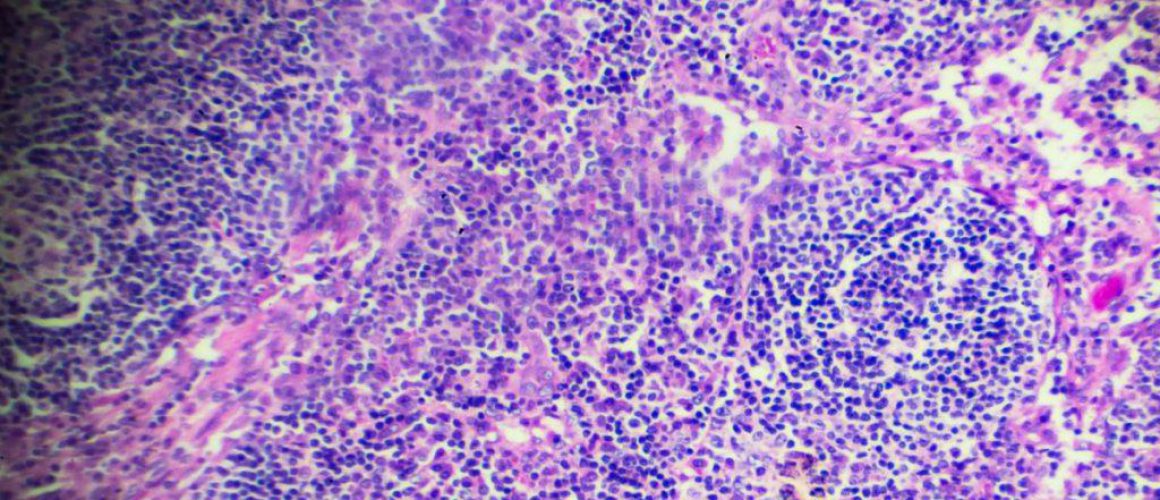Eosinophils and their involvement in allergic reactions
Table of Contents
Key Summary Table: Eosinophils
| Property | Description |
|---|---|
| Type of Cell | White Blood Cell |
| Function | Immune response, especially in allergic reactions and parasitic infections |
| Normal Count | 1-4% of white blood cells |
| High Count Indicates | Allergic reactions, parasitic infections, certain autoimmune diseases, some cancers |
| Role in Inflammation | Release chemicals causing inflammation during immune response |
Eosinophils, those microscopic defenders in our blood, play a starring role in allergic reactions. Ever wondered why? Stick around as we unravel the mystery, sharing insights from my medical technology studies that’ll make even the most complex concepts a breeze to understand.
Introduction
As a medical technology student, I’ve always been fascinated by the intricate roles our cells play in our health, and today, I’d like to delve into the world of Eosinophils and their crucial role in allergic reactions. These unique cells, part of our body’s complex immune system, have a significant impact on how our bodies respond to allergens. Understanding Eosinophils is not just a matter of academic interest; it’s a journey into the very mechanisms that keep us healthy and react when things go awry.
Understanding eosinophils is like unlocking a new level in the game of immunology. They may be a small part of our white blood cells, but their impact is mighty.
In this article, we’ll explore the fascinating world of Eosinophils, their role in allergic reactions, and the broader field of Hematology. We’ll also delve into some of the questions that often arise when discussing these cells, such as what happens when the Eosinophil count is high and how it relates to inflammation. So, let’s embark on this journey together, shedding light on these microscopic warriors of our immune system.
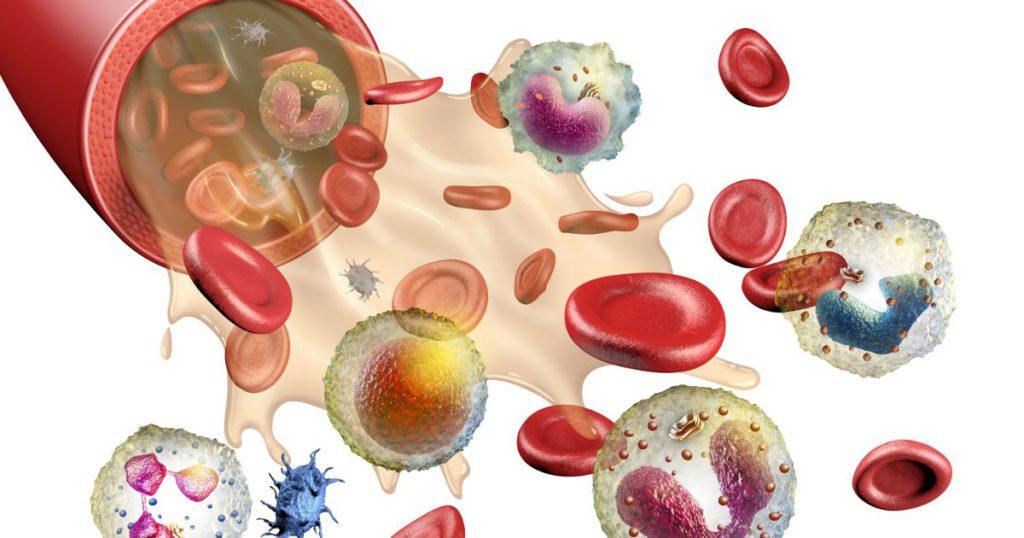
Understanding Hematology and Eosinophils
Before we dive into the specifics, let’s take a moment to understand Hematology and the unique role of Eosinophils in our immune system. Hematology is the branch of medicine that deals with the study of blood, blood-forming organs, and blood diseases. It encompasses elements like red and white blood cells, their count, the blood vessels, and the diseases related to them.
Eosinophils, on the other hand, are a type of white blood cell that plays a vital role in our body’s immune response. They’re particularly active during allergic reactions and when our body is invaded by parasites. Understanding the role of Eosinophils in our immune system is crucial to understanding how our bodies react to allergens and other foreign substances.
| Term | Description |
|---|---|
| Hematology | The study of blood, blood-forming organs, and blood diseases |
| Eosinophils | A type of white blood cell involved in immune response |
The Role of Eosinophils in the Immune System
Eosinophils, while lesser-known than their counterparts like white blood cells, play a pivotal role in our immune response, especially when it comes to allergic reactions. These cells are packed with granules containing potent chemicals, which they release when they encounter a foreign substance in the body. This release is a key part of the body’s immune response, but it can also contribute to the symptoms we associate with allergies.
But what happens when the number of Eosinophils in the body increases? This is where things get interesting. An increase in the Eosinophil count can indicate an ongoing allergic reaction or infection. However, it’s also possible for this count to rise without a clear cause, a condition known as eosinophilia.
- Eosinophils are part of the body’s immune response
- They release chemicals when they encounter a foreign substance
- This can cause inflammation and other symptoms of an allergic reaction
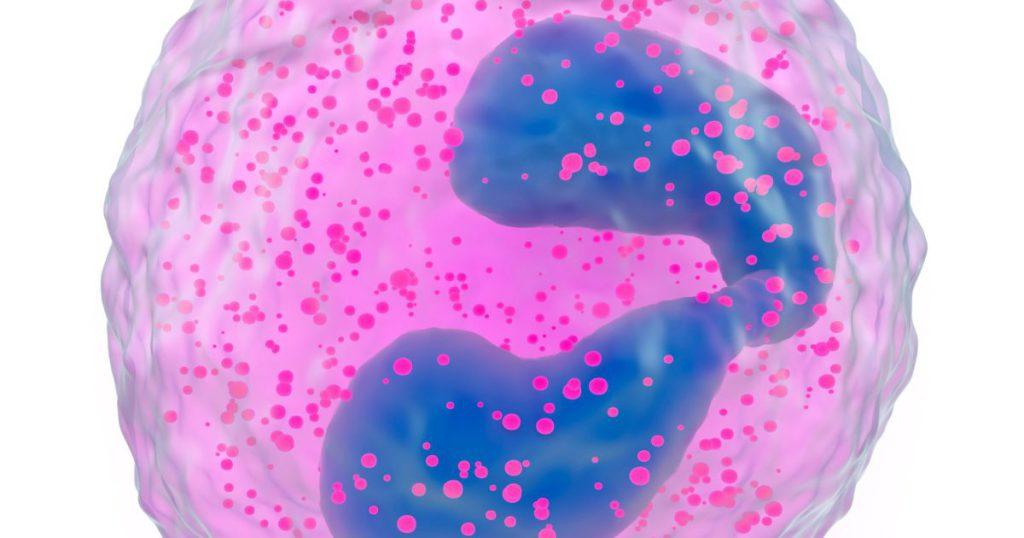
Eosinophils and Allergic Reactions
Now that we’ve established what Eosinophils are, let’s explore how these cells are involved in allergic reactions and why they’re so important. When an allergen enters the body, it triggers an immune response. Part of this response involves the release of chemicals from Eosinophils, which can cause inflammation and other symptoms of an allergic reaction.
But why does this happen? The answer lies in the nature of allergic reactions. When the body encounters an allergen, it sees it as a threat and mounts an immune response. Eosinophils are part of this response, and their activity can contribute to the symptoms we associate with allergies.
| Reaction | Role of Eosinophils |
|---|---|
| Allergic Reaction | Release chemicals causing inflammation |
| Parasitic Infection | Attack and kill parasites |
High Eosinophil Count: Causes and Implications
One question that often arises is, “What happens if eosinophil count is high and what causes it?” Let’s delve into this topic and understand the implications of a high eosinophil count. A high count, known as eosinophilia, can occur for various reasons, including allergies, asthma, and infections. It can also be a sign of certain autoimmune diseases or even cancer.
| Condition | Effect on Eosinophil Count |
|---|---|
| Allergies | Increase |
| Autoimmune Diseases | Increase |
| Certain Cancers | Increase |
When the eosinophil count is high, it means that the body is likely responding to an allergen or infection. However, it’s also possible for the count to rise without a clear cause, a condition known as idiopathic eosinophilia. This can be a cause for concern, as it might indicate a more serious underlying condition.
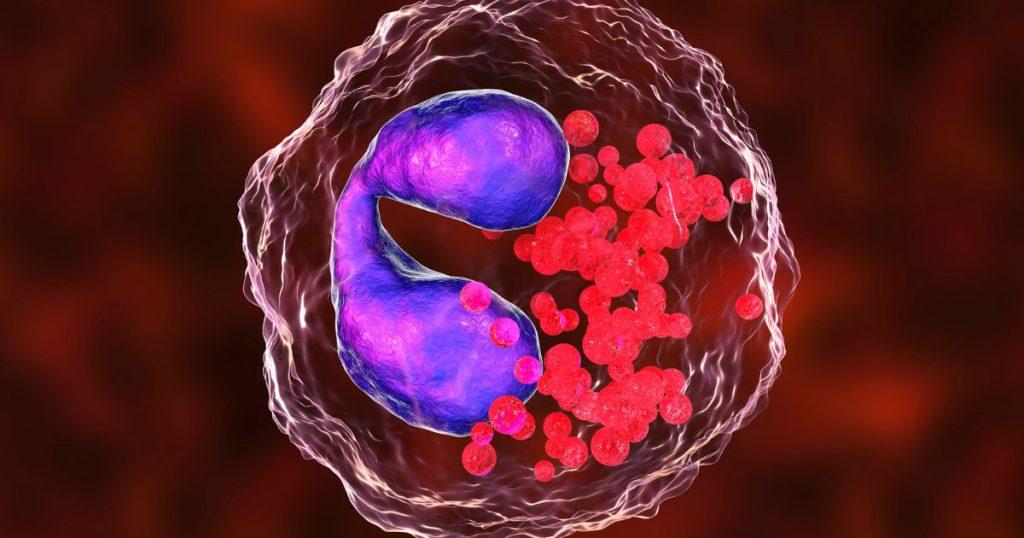
Eosinophils and Inflammation
A common query is, “Does high eosinophils mean inflammation?” In this section, we’ll explore the relationship between eosinophils and inflammation in the body. Eosinophils are indeed involved in the inflammatory response. When they encounter an allergen or parasite, they release chemicals that can cause inflammation. This is part of the body’s defense mechanism, but it can also lead to symptoms like redness, swelling, and pain.
However, it’s important to note that not all inflammation is bad. In fact, inflammation is a crucial part of the body’s healing process. But when inflammation becomes chronic or occurs in response to non-threatening substances, it can lead to health problems.
- Eosinophils are involved in the inflammatory response
- They release chemicals that can cause inflammation
- Inflammation is a crucial part of the body’s healing process
Understanding Positive Eosinophil Results
But what does it mean if eosinophils are positive? Let’s demystify this term and understand its implications for our health. A positive result for eosinophils in a blood test typically means that the eosinophil count is higher than normal. This can indicate an ongoing allergic reaction or infection, but it can also be a sign of certain autoimmune diseases or other conditions.
It’s important to remember that a positive result is not a diagnosis in itself. Instead, it’s a piece of the puzzle that can help healthcare professionals determine what’s going on in the body. If you get a positive result, it’s important to discuss it with your healthcare provider to understand what it means for you.
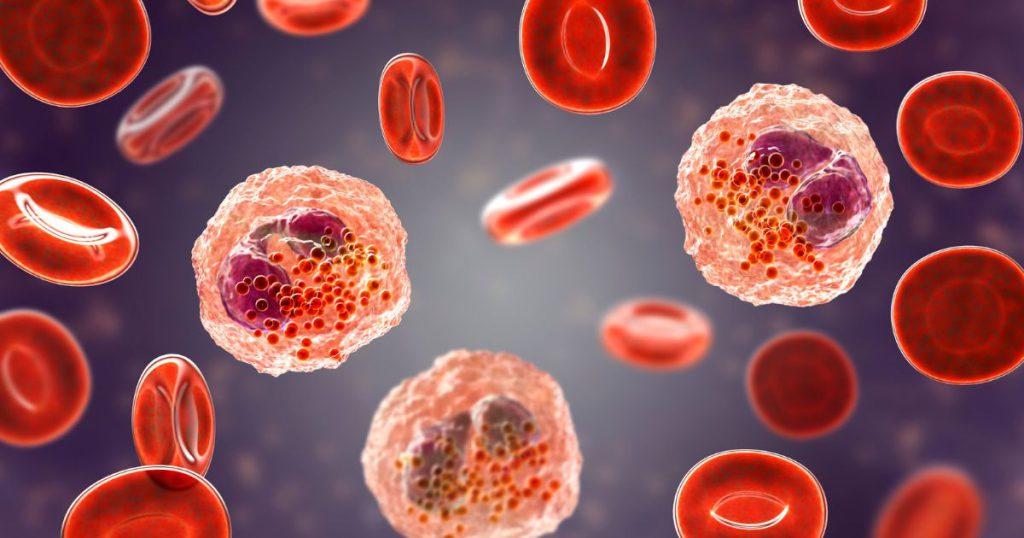
Managing Eosinophil Levels
A question I often encounter is, “How can I lower my eosinophils?” The best approach depends on the underlying cause of the high eosinophil count. For example, if allergies are the cause, managing the allergies can help reduce the eosinophil count. This can involve avoiding known allergens, taking antihistamines, or undergoing immunotherapy.
In some cases, medication may be necessary to reduce the eosinophil count. This can include corticosteroids, which can help reduce inflammation and lower eosinophil levels. However, these medications should be used under the guidance of a healthcare provider, as they can have side effects.
| Strategy | Effect on Eosinophil Levels |
|---|---|
| Avoiding Allergens | Decrease |
| Taking Antihistamines | Decrease |
| Undergoing Immunotherapy | Decrease |
Personal Experience with Eosinophils Study
During my time in the lab, I had the opportunity to study Eosinophils up close, and I’d like to share some of my experiences and insights. Seeing these cells in action, I was struck by their complexity and the crucial role they play in our health. From fighting off parasites to triggering allergic reactions, Eosinophils are truly fascinating cells.
- Studying eosinophils provides insight into their complexity
- Ongoing research is crucial for understanding these cells
- This can lead to the development of new treatments and therapies
Studying Eosinophils also highlighted the importance of ongoing research in this area. While we’ve learned a lot about these cells, there’s still much we don’t know. By continuing to study Eosinophils and other elements of our immune system, we can hope to develop new treatments and therapies for a range of conditions.
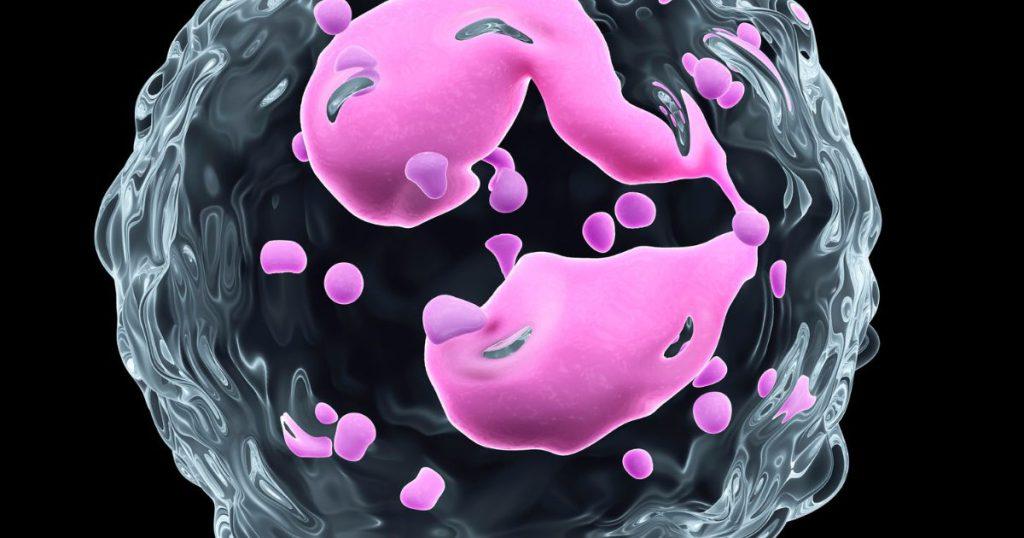
The immune system is not a single entity. We must think of it as a complex network, and eosinophils are a key player in this intricate game.
Conclusion
Understanding the role of Eosinophils in allergic reactions not only deepens our knowledge of Hematology but also opens avenues for potential treatments and therapies. As we continue to explore the complex world of our immune system, we can hope to gain new insights that can help us live healthier lives.
Disclaimer: This article is intended for informational purposes only. It is not a substitute for professional medical advice, diagnosis, or treatment. Always seek the advice of your physician or other qualified health provider with any questions you may have regarding a medical condition. Never disregard professional medical advice or delay in seeking it because of something you have read on this website.
If you find the captivating world of hematology as intriguing as I do, continue exploring this fascinating field. Visit my Hematology index page or the Hematology category for more in-depth articles and insights.
Other posts of interest: Basophils and mast cells and Lymphocytes and immune responses
Frequently Asked Questions
What are Eosinophils?
Eosinophils are a type of white blood cell that plays a crucial role in our immune system. They’re particularly active during allergic reactions and when our body is invaded by parasites.
How are Eosinophils involved in allergic reactions?
When an allergen enters the body, it triggers an immune response. Part of this response involves the release of chemicals from Eosinophils, which can cause inflammation and other symptoms of an allergic reaction.
What does a high Eosinophil count indicate?
A high Eosinophil count, known as eosinophilia, can occur for various reasons, including allergies, asthma, and infections. It can also be a sign of certain autoimmune diseases or even cancer.
Does a high Eosinophil count mean there is inflammation?
Yes, Eosinophils are indeed involved in the inflammatory response. When they encounter an allergen or parasite, they release chemicals that can cause inflammation. This is part of the body’s defense mechanism, but it can also lead to symptoms like redness, swelling, and pain.
What does a positive Eosinophil result mean?
A positive result for Eosinophils in a blood test typically means that the Eosinophil count is higher than normal. This can indicate an ongoing allergic reaction or infection, but it can also be a sign of certain autoimmune diseases or other conditions.
How can I lower my Eosinophil levels?
The best approach depends on the underlying cause of the high Eosinophil count. For example, if allergies are the cause, managing the allergies can help reduce the Eosinophil count. This can involve avoiding known allergens, taking antihistamines, or undergoing immunotherapy. In some cases, medication may be necessary to reduce the Eosinophil count.
What is the relationship between Hematology and Eosinophils?
Hematology is the branch of medicine that deals with the study of blood, blood-forming organs, and blood diseases. Eosinophils, as a type of white blood cell, fall under the study of Hematology. Understanding the role of Eosinophils in our immune system is crucial to understanding how our bodies react to allergens and other foreign substances.
Further reading
Sean Schepers is a third-year Medical Technology student at Mahidol University with a passion for all things health and medicine. His journey into the world of medicine has led him to explore various fields. Sean's blog posts offer a unique perspective, combining his academic insights with personal experiences. When he's not studying or blogging, Sean enjoys keeping up with politics and planning his future career in medicine.
In addition to his studies, Sean serves as the chairman of the Rights, Liberties, and Welfare Committee, a role that reflects his commitment to advocacy and social justice. Beyond his academic pursuits, Sean offers tutoring services in English and Biology, further demonstrating his dedication to education and mentorship. His journey is one of continuous discovery, and he invites others to join him as he explores the dynamic and transformative world of medical technology.

